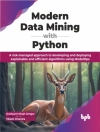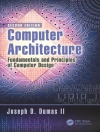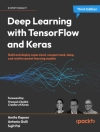Activity theory is a way of describing and characterizing the structure of human – tivity of all kinds. First introduced by Russian psychologists Rubinshtein, Leontiev, and Vigotsky in the early part of the last century, activity theory has more recently gained increasing attention among interaction designers and others in the hum- computer interaction and usability communities (see, for example, Gay and H- brooke, 2004). Interest was given a signi?cant boost when Donald Norman suggested activity-theory and activity-centered design as antidotes to some of the putative ills of “human-centered design” (Norman, 2005). Norman, who has been credited with coining the phrase “user-centered design, ” suggested that too much attention focused on human users may be harmful, that to design better tools designers need to focus not so much on users as on the activities in which users are engaged and the tasks they seek to perform within those activities. Although many researchers and practitioners claim to have used or been in?uenced by activity theory in their work (see, for example, Nardi, 1996), it is often dif?cult to trace precisely where or how the results have actually been shaped by activity theory. Inmanycases, evendetailedcasestudiesreportresultsthatseemonlydistantlyrelated, if at all, to the use of activity theory. Contributing to the lack of precise and traceable impact is that activity theory, – spite its name, is not truly a formal and proper theory.
Daftar Isi
Human-Centered Software Engineering: Software Engineering Architectures, Patterns, and Models for Human Computer Interaction.- Human-Centered Software Engineering: Software Engineering Architectures, Patterns, and Sodels for Human Computer Interaction.- User Experiences, Usability Requirements, and Design.- What Drives Software Development: Bridging the Gap Between Software and Usability Engineering.- Human Activity Modeling: Toward A Pragmatic Integration of Activity Theory and Usage-Centered Design.- A User-Centered Framework for Deriving A Conceptual Design From User Experiences: Leveraging Personas and Patterns to Create Usable Designs.- XML-Based Tools for Creating, Mapping, and Transforming Usability Engineering Requirements.- Modeling and Model-Driven Engineering.- Multipath Transformational Development of User Interfaces with Graph Transformations.- Human-Centered Engineering Of Interactive Systems With The User Interface Markup Language.- Megamodeling and Metamodel-Driven Engineering for Plastic User Interfaces: MEGA-UI.- Cause and Effect in User Interface Development.- Interactive Systems Architectures.- From User Interface Usability to the Overall Usability of Interactive Systems: Adding Usability in System Architecture.- Toward a Refined Paradigm for Architecting Usable Systems.- Trace-Based Usability Evaluation Using Aspect-Oriented Programming and Agent-Based Software Architecture.- Achieving Usability of Adaptable Software: The Amf-Based Approach.- Reengineering, Reverse Engineering, and Refactoring.- The Gains Design Process: How to do Structured Design of User Interfaces in Any Software Environment.- Legacy Systems Interaction Reengineering.- Using Reverse Engineering for Automated Usability Evaluation of Gui-Based Applications.- Task Models and System Models as A Bridge Between Hci and Software Engineering.












